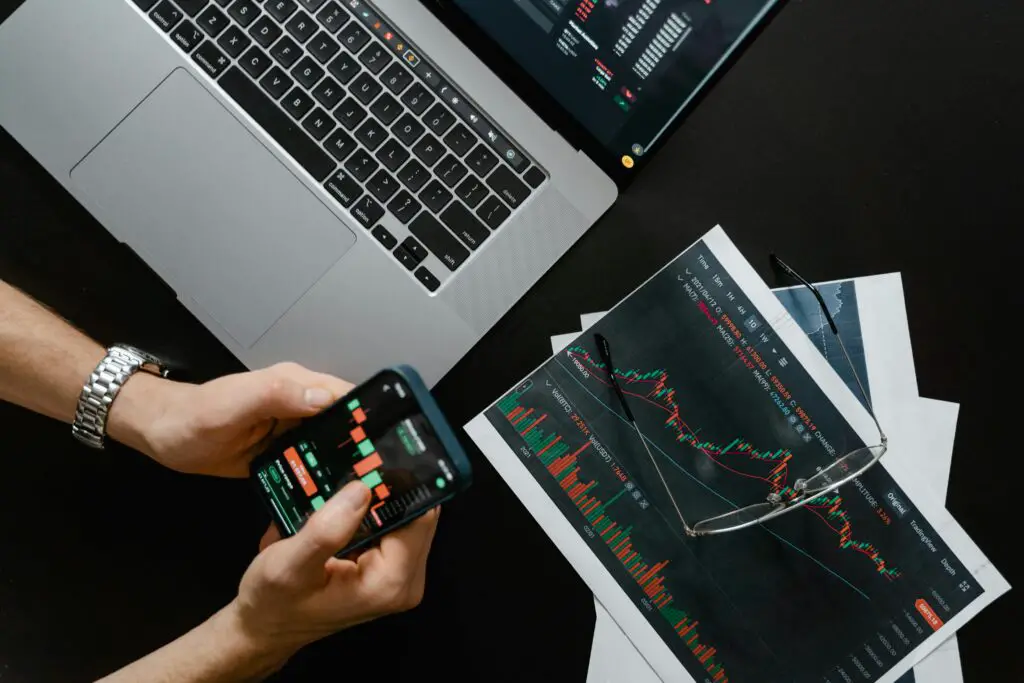Spotting Inflation and How It Impacts Forex Markets
An very important financial indicator is cape. It shows how quickly the cost of goods and services rises overall degrading money. Inflation can have a major effect on currency prices in the foreign exchange market. The currency of a nation often falls in relation to the currency of the nations with which it trades when its inflation rate rise. This occurs because in an effort to prevent prices from rising further by the central bank usually improves interest rates in response to rising prices. Interest rates have an impact on foreign exchange rates, which in turn has an impact on the tactics used by forex traders.

The Forex Markets Inflation Drivers
The currency market is affected by price in a number of ways. It alters interest rates first. Interest rates are adjusted by central banks such as the US central bank and the European Central Bank to control prices. Foreign investors seek out higher returns when interest rates rise which boosts the value of the currency. Yet countries tend to decline in value as interest rates decline.
Second inflation has an impact on trade deficits. Prices of its goods will rise relative to those of its trading partners if its inflation rate above theirs. Due to the reduced cost of foreign goods this will result in a decrease in the demand for exports and an increase in the demand for imports. When more people seek to purchase foreign currencies this difference may cause the currency to weaken.
And finally inflation forecasts are critical. Traders may sell off their currency if they see higher inflation and a decline in value. The market will quickly shift as a result of this. This kind of action weakens the market and can cause large swings in the value of a currency This can signal chances as well as risks for forex traders. Trading Strategies for Pricey Societies
1. Keeping an eye on financial metrics
You must have a thorough understanding of economic indicators before you can trade forex profitably during periods of inflation. The Producer Price Index (PPI) and the Consumer Price Index (CPI) are two signs of inflation that traders should follow. These indicators allow us to see how a country inflation is spreading. In order to understand monetary policy traders should also review central bank releases and meeting minutes since they often offer clues about the timing of interest rate changes.
2. Dealing with Rate of Interest Changes

Interest rate differences in or the difference in interest rates between two countries have a major effect on the value of a currency as prices rise. One strategy that traders might employ to profit from these disparities is the carry trade. In order to do this funds are transferred from a nation with low interest rates to one with higher rates. Profits are derived from interest rate differentials in but buyers need to be mindful of exchange rate risks as poorly timed currency exchanges might negate the benefits of interest rate differentials.
3. Making Use of Technical Analysis
When dealing with inflation technical analysis can be highly beneficial for currency buyers. Price charts and historical patterns can be used by traders to identify trends and potential turning points. Technical indicators such as average movement Bollinger Bands and the Relative Strength Index (RSI) can be used by traders to make decisions on whether to enter and exit a trade. Trend analysis is a vital skill for traders since times of high inflation can cause markets to become extremely unstable.
4. Defending Against Risks of Price
Hedging is an approach to guard against monetary damage due to severe changes in currency values. Forex traders can hedge their bets in a number of methods including forward contracts futures and options. For example a seller can fix an exchange rate for a future date by putting into a forward contract. This protects against the possibility that the value of the currency would decline. In a similar vein options allow you to buy or sell a coin at a certain price but they are not obligated you to. This is helpful when markets are volatile.
5. Adding Variety to Dollar Investing
One of the most essential methods for reducing risk in forex trading is variety. By dividing their purchases over a variety of currencies traders may reduce the impact of unwanted swings in a single currency. There is a chance that some currencies will be riskier than others during inflation. For instance when it comes to inflationary pressures developing market currencies typically change more than more stable developed market currencies. This type of volatility can be reduced by having an array of investments. Cases of How Forex Markets Are Hurt by Inflation
its Inflation in excess
One of the most striking examples of how inflation can impact the foreign exchange market is the inflation happened in Zimbabwe in the late 2000s. Zimbabwe, an African country has the highest rate of inflation in the world at 89.7 sextillion percent. The US dollar and the South African rand are two safer foreign currencies that have gained popularity in place of the nearly useless Zimbabwean dollar. Forex traders may profit from a short position in the Zimbabwean currency when it declined if they saw the warning indications early.

The 1970s American Price Wave
Changes in the price of oil and loose the fiscal stance during the 1970s caused a sharp increase in inflation in the United States. When the US central bank first declined to raise interest rates the situation got worse and the value of the US dollar fell quickly. The foreign exchange market was very erratic for sellers at this period. People with an understanding of how inflation impacts the value of money could profit from currency trading that appreciated in value relative to the the US dollar such as the German mark and the Japanese yen.
Current Trends in Prices Following COVID-19
The COVID-19 epidemic created never before seen economic challenges which prompted massive global stimulus measures programs. Inflationary pressures resulted from supply chain issues a lack of workers and increased demand as countries began to recover. In several capitalism in 2021 and 2022 prices rose at a rate that were not seen in decades. Forex traders had to keep a careful eye on what the central banks were doing during these difficult times and adjust their strategies accordingly.
Central the Banks Function in Controlling Inflation
In order to keep the foreign exchange market and inflation under control central banks play a vital part. As part of its monetary policy central banks use tools including interest rate adjustments open markets and fiscal easing to try to maintain prices. The central the banks remarks and actions frequently indicate future currency actions so forex traders should closely monitor them.

The Federal Reserve
One of the most important groups in the global foreign currency markets is the Federal Reserve (Fed) which serves as the central bank for the United States. Supporting full employment and stable pricing is the Fed’s responsibility. The Federal Reserve may increase interest rates in an effort to discourage spending and reduce inflationary pressures when inflation is too much. As a result the US dollar could bolster since higher interest rates draw in foreign capital.
The Central Bank of Europe
The money supply in the Eurozone is controlled by the European Central Bank (ECB). Preserving price stability is its primary objective. The European Central Bank (ECB) could increase interest rates or reduce its intentions to buy assets in reaction to price rises. By taking these actions the euro may become more valuable than different currencies. Forex traders must be aware of the ECB’s policy moves and pronouncements in order to forecast market reactions.
The Japan Bank
The Bank of Japan (Bojja) has long been challenged by deflation factors. However should inflation materialize it may prove challenging for the Bojja to manage inflation while also fostering economic expansion. A policy shift by the Bank of Japan such as an increase in interest rates might have a significant impact on the value of the Japanese yen. To predict how the yen might move forex traders should keep an eye on the actions of the Bank of Japan and fresh economic data.
In summary
Trading on the currency market during a recession requires a thorough understanding of economic indicators central bank policies and market dynamics. Price volatility can have both positive and negative effects on consumers due to inflation. By using technical analysis trading interest rate differentials analyzing economic indicators hedging against price risks and spreading their currency holdings traders can address the issue of inflation. You can also forecast future market movements by following the actions of the central bank and studying past information. Since the economy is always changing it is critical to adjust and choose wisely while trading foreign exchange.

